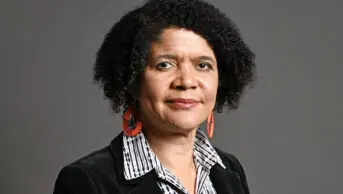We have covered new roles in pharmacy in my past columns. As I have reflected, the profession deserves credit for how it handled the introduction of new pharmacy technician responsibilities, bringing existing healthcare professionals along with what remains a fundamentally good idea, and doing so over a long enough period of time to iron out many wrinkles.
The contrast with the new medical associate roles currently causing serious controversy in the NHS and the medical professions is clear.
But not everything is rosy in the pharmacy garden, in regards to training and integrating new staff. The Pharmaceutical Journal reported on the National Pharmacy Association‘s advice to community pharmacies to “consider withdrawing from the Oriel scheme” — an online portal for recruitment to various healthcare professions in the UK — if they are unlikely to have access to a designated prescribing practitioner (DPP) for the start of the 2025/2026 foundation programme.
In October 2023, NHS England announced that employers wanting to take on a pharmacist trainee in 2025/2026 were obliged to confirm by March 2024 that they can provide access to a DPP.
DPPs supervise trainee independent prescribers during their hands-on, experiential learning. They can be pharmacists, doctors, nurses or dentists and they must already be an independent prescriber themselves.
The majority of DPP roles are unpaid, making it difficult for busy professionals to justify taking the position
On 1 May 2024, the NPA claimed it is “increasingly apparent that access to a DPP in community pharmacy is very difficult”. The statement warned that unless a DPP is already in place, the chances of securing one in time for the 2025/2026 foundation year “are slim”, suggesting that this could lead to “unintended adverse consequences” in making prospective pharmacist students seek another placement at short notice — as well as risking the reputation of the would-be training organisation.
This seems curious. NHS England gave the sector six months to guarantee that they can put a DPP in place by August 2025, meaning that even now, at the time of going to press, there remain 14 months to get this right.
Are the chances of doing that genuinely “slim”? I don’t know, but assuming the rewards (financial, status or other) of being a training site are sufficient to motivate change, then the 14 months ahead seems like a not-small period of time. Let’s remember, this is the sector that is having to deal on an ongoing basis with widespread shortages of commonly prescribed medicines. If there is one skill that community pharmacists have had to develop, it is the ability to scramble.
We might also wonder how the NPA quantified the likelihood of access to a DPP. Here, you really want a pharmacy workforce expert’s view, rather than that of a health policy analyst. Some hard DPP numbers would also be useful, but none seem to be available. We do know that recent data from the General Pharmaceutical Council (GPhC) show more than 18,000 registered, qualified independent practitioners and there are more than 64,000 pharmacists on the register.
But the NPA’s concerns are not baseless. From 2026, the plan is for all newly-qualified pharmacists to be independent prescribers. This requires employers to make provisions for students to have access to 90 hours of DPP supervision during their 2025 foundation year.
However, as the Pharmaceutical Journal has shown, access to DPPs has been an ongoing concern among pharmacists and education providers, owing to the limited number of DPPs. In March 2023, Health Education England tendered a contract for a provider to train 500 community pharmacists to become DPPs by the end of March 2024. The contract, worth £500,000, was awarded to pharmacy workforce training provider ProPharmace.
There is a further problem, which is incentives. The majority of DPP roles are unpaid, making it difficult for busy professionals to justify taking the position.
My earlier assumption was that there were good reasons beyond altruism to become a DPP. In the health system of 2024, making the assumption that altruism will get people to do extra unpaid work is what civil servants usually describe as ‘brave’.
Some simple maths: if there are zero drop-outs or failures from this training (which is unlikely), then the 500 newly-trained DPPs will expand 2025/2026 foundation year supervision capacity by 90 hours per ‘x’ number of students (where ‘x’ = a safe and reasonable number of students for each DPP to train).
To run this equation, we need to define ‘x’. What is a reasonable number of students per newly-trained DPP? Then we need to know roughly how many students are coming through the system for their foundation year in 2025/2026 — in 2022 there were 1,419 full-time equivalent trainees in community pharmacy alone. If the total number of extant trained DPPs plus the newly-trained 500, multiplied by ‘x’, is roughly equal to the number of students, then this scheme might be broadly OK.
If not, then not.
And if not, then some money has to be found to incentivise people to become DPPs, and fast.
Andy Cowper is the editor of Health Policy Insight


